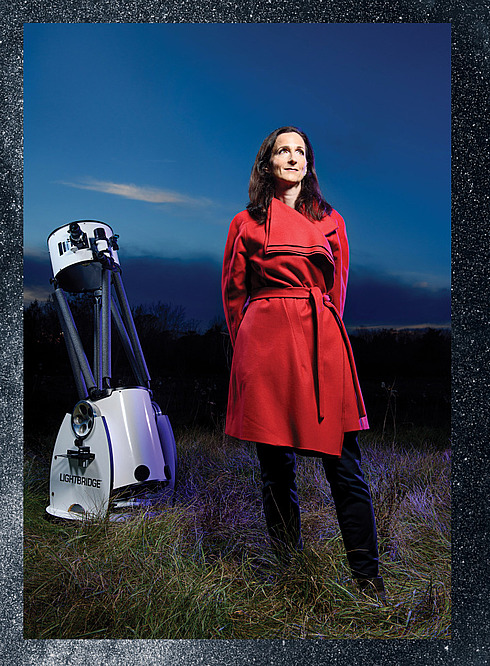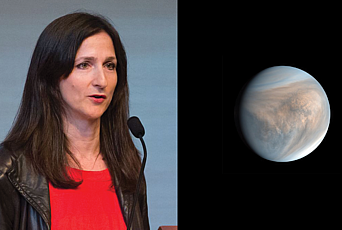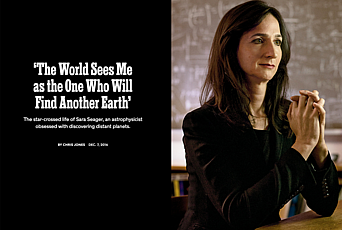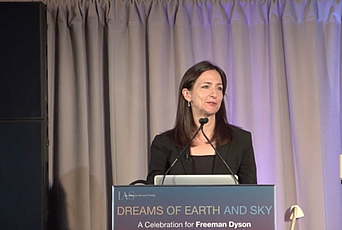
My Satellite Would Fit in a Small Suitcase
By Sara Seager, Member (1999–2002) in the School of Natural Sciences
"At its essence, astrophysics is the study of light. We know that there are stars other than the sun because we can see them shining. But light doesn’t just illuminate. Light pollutes. Light blinds. Little lights—exoplanets—have forever been washed out by the bigger lights of their stars, the way those stars are washed out by our sun. To find another Earth, we’d have to find the smallest lights in the universe.
If, for the moment at least, astronomers couldn’t fight the brightness of stars, maybe we could use their power to our advantage. Bodies in transit sometimes align. If we were lucky, a planet might pass between us and its star, creating something like a miniature eclipse. The moon looks giant when it blocks out the sun. The Transit Technique, as it would come to be called, applied the same principle to exoplanets. We would find them not by the light they emitted, but by the light they spoiled. Nothing stands out like a black spot.
In the fall of 1999, while I was a postdoctoral fellow at the Institute for Advanced Study in Princeton, the first transit of a known planet—HD 209458b, a “hot Jupiter”—was announced. It was absolutely fantastic news, in part because the discovery erased the last shred of doubt that exoplanets exist."
Read more at MIT Technology Review.


